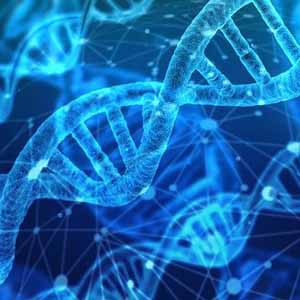pH evaluation of storage fluids and ancient DNA extraction from wet specimens in pathology museums

Accepted: September 20, 2022
All claims expressed in this article are solely those of the authors and do not necessarily represent those of their affiliated organizations, or those of the publisher, the editors and the reviewers. Any product that may be evaluated in this article or claim that may be made by its manufacturer is not guaranteed or endorsed by the publisher.
Pathology museums host ancient samples obtained during autopsies and generally used for educational purposes in the past. Such collections consist of dry and wet specimens showing diseases that no longer exist or with their natural course unmodified by modern therapies.1,2 In wet specimens, the preservation of macroscopic features due to the storage fluid has a great historical and paleopathological interest. Unfortunately, both original fixatives and storage fluids strongly influence tissue antigens and nucleic acids preservation.3 [...]
Ferrari L, Coda R, Fulcheri E, Bussolati G. The role of the pathological anatomy museum: Past glory, present crisis, and future prospects. Pathologica 2001;93:196-200.
Ferrari L. From body preservation to pathology museums in Italy: Conservation and modern value of a historical and biological archive. Med Secoli 2021;33:441-82.
Fulcheri E, Micalizio S, Ferrari L. Valore museale delle soluzioni di dimora nelle preparazioni anatomiche umane. Museol Sci 2008;3:88-92.
Schäffer S, Zachos FE, Koblmueller S. Opening the treasure chest: A DNA-barcoding primer set for most higher taxa of Central European birds and mammals from museum collections. PLOS One 2017;12:e0174449.
Strauben N, Lyra ML, Paijmans JLA, et al. Successful application of ancient DNA extraction and library construction protocols to museums wet collection specimens. Mol EcolResour 2021;21:2299-315.
Ferrari L, Metovic J, Rullo D, et al. Histopathology and DNA evaluation of wet specimens from the Pathology Collection of Turin. Virchows Archiv 2019;475:S35.
Hühns M, Röpenack P, Erbersdobler A. Molecular and immunohistochemical characterization of historical long-term preserved fixed tissues from different human organs. PLOS One 2015;10:e0135297.
Hühns M, Erbersdobler A, Obliers A, Röpenack P. Identification of HPV types and Mycobacterium tuberculosis complex in historical long-term preserved formalin fixed tissues in different human organs. PLOS One 2017;12:e0170353.
Hargrave CW, Sutherland KG, Marsh-Matthews E, Matthews WJ. Multiple interacting factors affect pH in museum storage solutions. Collection Forum 2005;19:23-31.
Copyright (c) 2022 the Authors

This work is licensed under a Creative Commons Attribution-NonCommercial 4.0 International License.
PAGEPress has chosen to apply the Creative Commons Attribution NonCommercial 4.0 International License (CC BY-NC 4.0) to all manuscripts to be published.


 https://doi.org/10.4081/jbr.2022.10820
https://doi.org/10.4081/jbr.2022.10820



